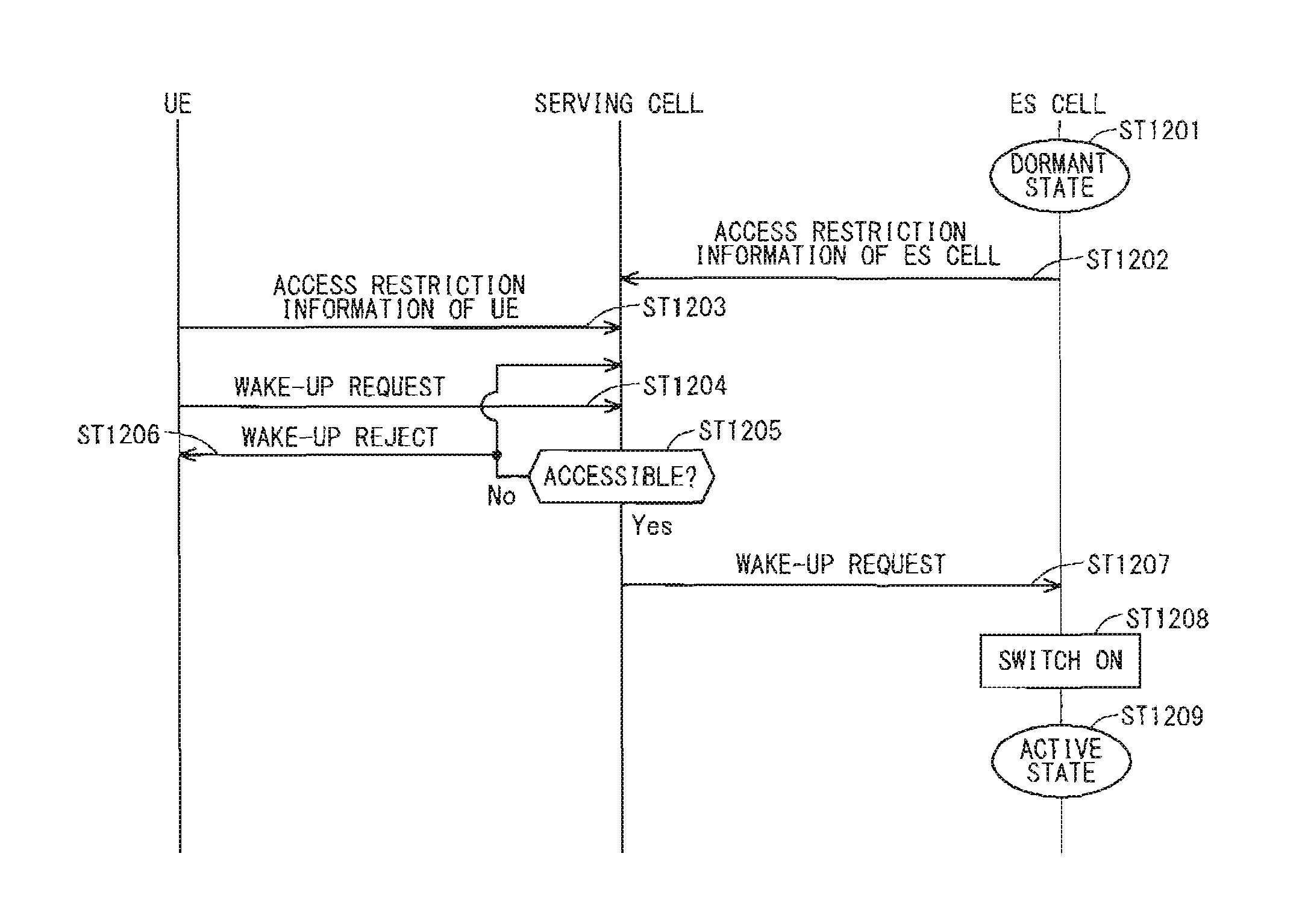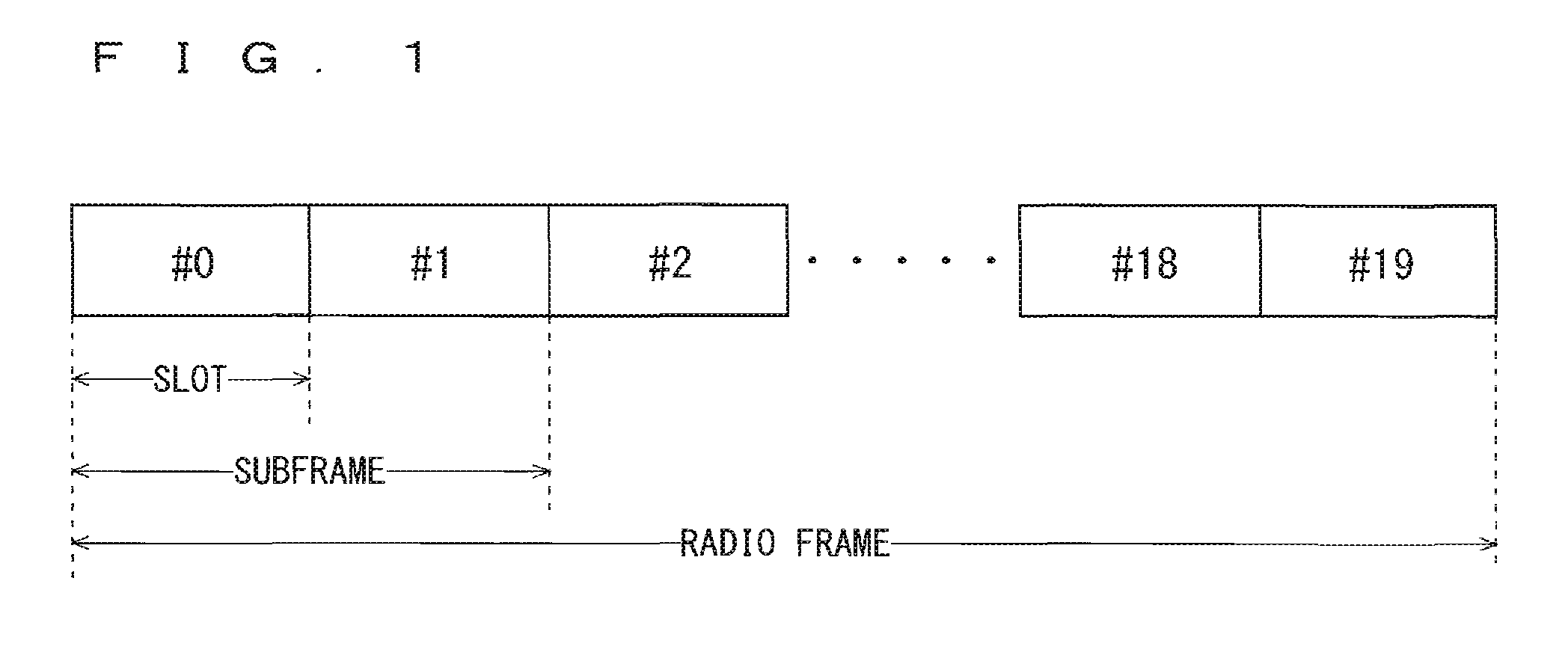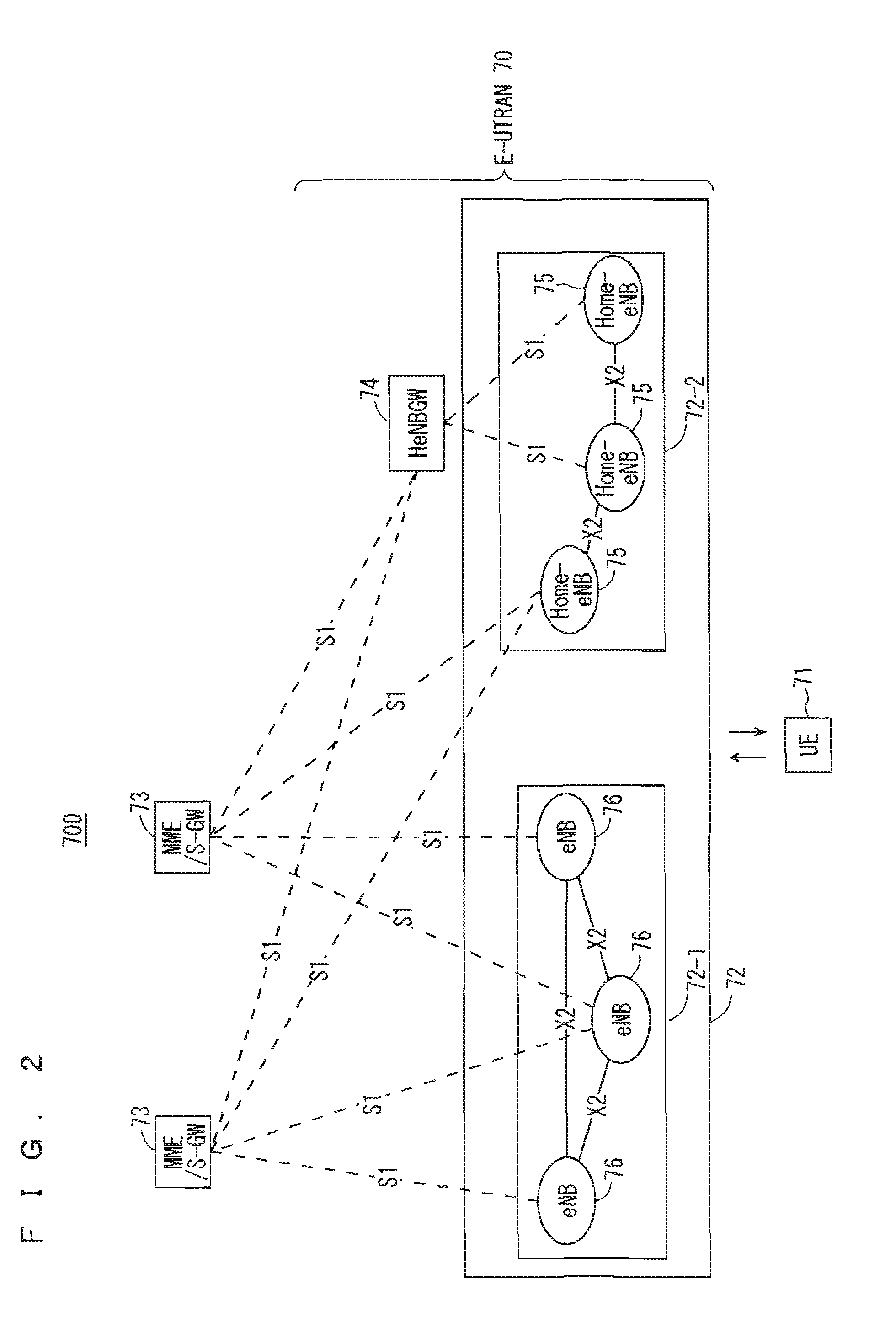Communication system
- Summary
- Abstract
- Description
- Claims
- Application Information
AI Technical Summary
Benefits of technology
Problems solved by technology
Method used
Image
Examples
first embodiment
[0088]FIG. 2 is a block diagram showing an overall configuration of an LTE communication system 700, which is under discussion of 3GPP. FIG. 2 will be described. A radio access network is referred to as an evolved universal terrestrial radio access network (E-UTRAN) 70. A user equipment device (hereinafter referred to as a “user equipment (UE)”) 71 that is a communication terminal device is capable of radio communication with a base station device (hereinafter referred to as a “base station (E-UTRAN Node B: eNB)”) 72 and transmits and receives signals through radio communication.
[0089]The E-UTRAN is composed of one or a plurality of base stations 72, provided that a control protocol for a user equipment 71 such as a radio resource control (RRC), and user planes such as a packet data convergence protocol (PDCP), radio link control (RLC), medium access control (MAC), or physical layer (PHY) are terminated in the base station 72.
[0090]The control protocol radio resource control (RRC) b...
second embodiment
[0368]This embodiment will disclose a specific example of the method of performing access restriction control when access restriction is based on EAB.
[0369]In extended access class barring (EAB) and access class barring (ACB), which are hereinafter also referred to as “EAB / ACB”, the UE performs access restriction control. When the ES cell is in the dormant state, however, the ES cell does not broadcast the system information. The conventional method of performing access restriction control thus cannot be used, in which a UE receives the broadcasted system information and makes a judgment.
[0370]Disclosed here is a method of performing EAB control in the wake-up process in which the ES cell in the dormant state is woken up.
[0371]FIG. 12 shows an example sequence of the wake-up process in a communication system of a second embodiment. FIG. 12 shows the case where the ES cell performs access restriction control based on the access class (AC) for EAB of the UE in the wake-up process. FIG...
third embodiment
[0488]This embodiment will disclose another specific example of the method of performing access restriction control when access restriction is based on EAB.
[0489]FIG. 16 shows an example sequence of the wake-up process in a communication system of a third embodiment. FIG. 16 shows the case where the ES cell performs access restriction control based on AC for EAB of the UE in the wake-up process. FIG. 16 also shows the case where the UE transmits a wake-up signal to the ES cell.
[0490]In step ST1901, the ES cell is in the dormant state.
[0491]The ES cell obtains the access restriction information of the UE as described below.
[0492]The UE notifies the ES cell of the AC information for EAB of its own UE. The case where notification is made via the serving cell will be disclosed. In step ST1902, the UE notifies the serving cell of the access restriction information. This is similar to the method disclosed in the second modification of the second embodiment, and thus, description thereof w...
PUM
 Login to View More
Login to View More Abstract
Description
Claims
Application Information
 Login to View More
Login to View More - R&D
- Intellectual Property
- Life Sciences
- Materials
- Tech Scout
- Unparalleled Data Quality
- Higher Quality Content
- 60% Fewer Hallucinations
Browse by: Latest US Patents, China's latest patents, Technical Efficacy Thesaurus, Application Domain, Technology Topic, Popular Technical Reports.
© 2025 PatSnap. All rights reserved.Legal|Privacy policy|Modern Slavery Act Transparency Statement|Sitemap|About US| Contact US: help@patsnap.com



